#eugenics wars
Text

More Khan content (Khantent?) Bc I'm in love with him <<3 Once again, I COULD FIX HIM
#star trek#star trek tos#art#my art#fanart#my fanart#khan fanart#wrath of khan#the wrath of khan#khan noonien singh#khan#eugenics wars
15 notes
·
View notes
Text
Just watched TOS 1:3, Where No Man Has Gone Before.
And I'm simply baffled. Why the automatic assumption that a superior man must be an evil man who wants to destroy you? That's not very Starfleet Values of you. Aren't y'all dealing with six superior forms of life before breakfast?
And then I think, no, actually. These people haven't gotten very far into the universe yet. They're still working on almost exclusively human crews. They haven't got Starfleet Values yet.
What they do have is a massive cultural trauma from the Eugenics Wars where they are terrified of supermen. Someone's more powerful than you? Yeah they're gonna kill you.
Gary didn't have to turn out bad. Dr. Dehner didn't. Gary's problem was that he bought into the lie that superior in ability means superiority, period. That those who are inferior have no value. Who knows where he got that, but I do believe it was in him before he got his powers. You don't see that in Wesley Crusher or in lots of other super powered beings in Star Trek. Just Gary.
6 notes
·
View notes
Text
Khan Noonien Singh
Khan Noonien Singh (August 15th, 1947-disappeared June 4, 1996) was an Indian activist, politician and dictator best known for his rule as Prime Minister of the Republic of India from 1984 to 1991 and as Khan of the Great Khanate of India from 1991 to 1996. Singh was born in 1947 to Adhar Singh and Hira Dakkar on the very date India officially became independent. Dakkar, notably, was the granddaughter of the famed Indian pirate/revolutionary and member of Britain’s League of Extraordinary Gentlemen Prince Chhatrasal Dakkar, better known as Captain Nemo. He was one of several hundred ‘midnight children’ born at the very moment India gained independence and like many of them was a metahuman. Singh, in particular, possessed latent psychic abilities that enabled him to quickly understand the emotions and intentions of those around him, a tool which greatly enabled him both as a child and into adulthood. Singh, owing to these abilities, would be discovered, kidnapped and forcibly recruited into the Chrysalis Project, a program intended to develop superior humans. The Chrysalis Project was the brainchild of the post-World War II incarnation of Hydra and was overseen by Wilhelm Strasse, a Nazi scientist smuggled out as part of Operation Paperclip who remained loyal to the ideals of that system. Singh’s treatment at the hands of the Chrysalis Project, which de facto raised him from 1950 to 1958, was extraordinarily mixed as was the case with many metahumans part of the project. On one hand, they were idealized as incarnations of a new super-race that would one day rule the world by the Hydra scientists running the program. On the other hand, the fact that so many Chrysalis subjects were not in line with Hydra’s Nazi racial ideals meant many were subject to physical violence and abuse and the project often tasked the metahuman children with a wide array of dangerous tasks.
Singh in particular was put in a number of heavily perilous situations at the behest of the Chrysalis Project. He was tasked with obtaining Kanamit technology during the brief lull between their departure from Earth and the world’s governments seizing their technology. Singh managed to pilfer only a single device, which was nonetheless enough to allow the Chrysalis Project to rapidly analyze human DNA. Singh was also sent to the underwater city of Rapture in 1959 to obtain plasmids, managing to sneak both in and out undetected thanks to playing off different factions within the city against each other. Hydra viewed the plasmids as a potential tool to augment their own ranks and avoid the need for the likes of Singh to directly father children. Singh also was tasked with carrying out contact with various other large criminal and terrorist cells to offer Hydra’s covert support to the likes of SPECTRE, THRUSH and KAOS as part of efforts to provoke global instability. By the time he reached age 13, Singh had already had dozens upon dozens of brushes with death and killed over 30 people personally. However, at this age, Singh finally came to question the Chrysalis Project’s intentions, recognizing the contradictions that his youth had caused him to ignore before. Singh would lead a small insurrection against Hydra in India, burning down the local Chrysalis Project facility and murdering several of those he knew were operating on Hydra’s behalf within India, most notably the mad scientist Dr. Cyclops. In the years that followed, Singh was somewhat aimless and unsure of what to do next, absent other direction. In other circumstances, he might have become a superhero and he initially did hold the likes of Superman in high esteem. However, in the early 1960’s, the emergence of the mutant community helped push him in a different direction.
The global backlash towards mutants was largely sparked by a belief that being born with superpowers was a result of literally mutation at birth. To many who hated them, mutants were as abominable as any kaiju and for similar reasons. The hostility to metahumans in general was pervasive, but there was a sense that for those who had become superhuman there was some attachment to baseline humanity left. However, mutants did not have to have that attachment and thus, in the view of anti-mutant activists, a distinct threat. In response to this backlash came the rise of Erik Lensherr, known better as Magneto. Magneto advocated a doctrine that mutants were the next stage of human evolution and should seek to take their rightful place as dominant over the rest of humanity, echoing the beliefs of John Wainwright. Singh would quickly come to embrace this mindset, though he welded it with unique elements of his own country’s circumstances. Seeing the destitution and poverty so many experienced in India firsthand–himself having lived through it after fleeing the Chrysalis Project–Singh came to believe that a part of why mutants should dominate was out of a sense of duty to uplift ‘lower’ humanity’s station. In this sense, Singh’s Augment ideology can be understood as a spiritual successor to Gellert Grindelwald’s perspective of wizard supremacy for the good of wizards and non-wizards alike as well as the even earlier conception of ‘white man’s burden’ that was popular in the 19th century. Singh wrote a series of letters to Lensherr outlining his beliefs of this sort and, while Lensherr never formally replied, a number of his later attitudes reflected heavy similarities to Singh’s thought and were a blueprint for his governorship of Genosha in the 1980’s.
Singh was able to lie low until the late 1970’s, when like many other Indian metahumans he was designated an enemy of the state by Prime Minister Priya Duryodhani. Duryodhani, seeking to seize dictatorial power for herself, used fear of civil unrest and metahumans as a tool to justify taking on emergency powers that enabled her to suspend elections and quash dissent by force. Most relevant to Singh, however, were the efforts of Duryodhani’s government to eliminate the Midnight Children and other metahumans. Hundreds of them were taken into government custody and subjected to abusive medical procedures that left most of them depowered and sterile. Singh himself was imprisoned and subject to this horrendous treatment, but managed to escape with some portion of his powers remaining. Singh was reportedly hidden by a man named Raghaven, who due to a psychotic break perceived Singh as his own son Raghu whom had been a victim of police violence during the Emergency. Eventually, the Emergency ended in 1977 and Duryodhani was removed from power in subsequent elections, but an embittered Singh vowed vengeance. He concluded the only way to protect metahumans in India was for them to seize control of the state apparatus. Singh over the next several years worked to build a power base, making contact with outside metahumans such as the Tomorrow People and Lensherr’s Brotherhood of Evil Mutants in a bid to gain support for his plans to seize political power. Within India, Singh recruited the bulk of surviving Midnight Children to his side and additionally built support among opposition to the regime, in particular focusing on dissenting government officials like Indu Sarkar and Vikram Malhotra (whom Singh gained the loyalty of by having a mutant ally of his heal a series of physical and mental injuries inflicted upon him by police).
Singh himself, meanwhile, used his charm to infiltrate the Kaurava Party and get close to Duryodhani. By the time of her 1980 return to power, Singh was a part of Duryodhani’s personal guard. By repeatedly halting (staged) assassination attempts, Singh has made himself seem a loyal supporter of Duryodhani. Singh continued to bide his time and build a covert power base of mutants and baseline humans alike within India while waiting for the opportune moment to claim full power. That moment would arrive in 1984, when World War III broke out after, in the wake of most American-based superheroes being abducted by the otherworldly beings known as the Beyonder or the Monitor, President Cyclops/Webster made a poorly-timed joke that convinced the Soviets to activate Project Koschei and invade large swathes of Europe and North America. While the rest of the world was distracted by trying to use Gojira to contain Cthulhu, the ongoing fighting in Germany, Hawaii and the Rockies and British Prime Minister Jim Jasper’s proclamation of a fascist ‘English Socialist’ regime in Britain after usurping Joan Carpenter, Singh had a perfect opening to organize the assassination of Duryodhani and her followers. Singh personally struck down the Prime Minister and allies embedded throughout India made quick work of fellow Kaurava Party members. Not only Kaurava Party leaders were targeted, Singh also eliminated a number of key opposition figures, high-ranking figures within the Indian military and even prominent businessmen and actors whom he deemed a threat to his rule. Singh’s proclamation of taking power in India occurred only after well over 1,000 men and women whom could have stood in his way were eliminated by his followers. The official story Singh provided was that Soviet operatives had sought to decapitate the Indian government as they had already done in neighboring China, which already was beginning to collapse into civil war. Singh’s assumption of the role of Prime Minister of India was thus framed as an effort to maintain stability.
Singh’s swift action and prepared excuses were crucial to giving his regime the legitimacy it needed early on. In the name of anti-communism, Singh was able to continue to purge potential threats to his rule. Singh did not, however, only have an iron fist to offer the people of India. He also pursued investment in infrastructure, education, healthcare and entertainment for the public, something that was both a logical outgrowth of his philosophy and a crucial act to wooing an uncertain public to his side. Singh spent the first three years of his reign largely focused on this consolidation of power, but after the 1986 general election allowed Singh loyalists to sweep Parliament, Singh felt comfortable enough to begin looking outward once more. His first priority was India’s large neighbor: China. Chinese-Indian relations had long been frosty, with a number of border skirmishes being fought with the country under their previous leader Chairman Peng Guoliang. But now Peng was dead, a victim of a Soviet first strike on Beijing, and a country with hundreds of millions was in the middle of a bloody struggle for power not seen since the 1930’s. Chinese refugees fled into Southeast Asia and India alike and Singh was easily able to make the case that intervention to restore order in China was a matter of India’s national interest. Both the Soviets and the United States also viewed restoring stability in China as important, but even after World War III formally ended in 1985, neither side was willing to trust the other in the country. India, in a sense, would be a nice, neutral compromise in the minds of American and Soviet leaders who agreed to Singh’s plan. Singh selected the warlord Wu Qinghua as the ideal candidate to manage China, ostensibly due to her ties to the old government coupled with a reformist bent. However, in reality, there was another reason for choosing her. Wu Qinghua was closely aligned with the Chinese criminal masterminds Fu Manchu, Shen Yu, and Zhang Tong–all three of whom were closely tied to the supernatural elements of Chinese history. The three figures were de facto immortal and possessed a number of heightened physical and mental abilities. Singh viewed them as natural allies to his own belief system and, as it turned out, they agreed.
By 1989, Indian support and the supernatural arsenal of the 3 ‘hidden hands’ behind Chairwoman Wu enabled China to once again be under one government (outside of Taiwan and Zheng Fa, which stubbornly clung to independence). With an ally/de facto puppet state secured in the North, Singh next sought to recruit additional allies across the globe. His vision had cleared considerably thanks to learning more of the supernatural world from Zhang–the Augment world would not only be run by mutants and superhumans, but by wizards, witches, cyborgs, vampires and any others whom had, by birth or by growth, transcended the domain of ‘normal’ humans. Singh invested a lot of time drawing former subjects to psychic research programs like the Athena Plan, Project Firestarter and the Zener Project to India, offering not only protection but a chance for vengeance. Singh also engaged in overtures to supernatural beings he considered potential allies, to mixed success. Lucius Malfoy and other remnant Death Eaters in Britain cordially received his overtures, but did not sincerely plan to taking much action to align with him. Queen Beryl’s Dark Kingdom comparatively was more open to such an arrangement, though Beryl herself harbored ambitions to rule the world on her own and viewed Singh as disposable. On the other hand, the ancient vampire known as Sariel who held those he fed upon in an unusually strong thrall, rejected the prospect of any alliance outright, vowing to conquer the world on his own. Singh quickly realized he could not solely rely on unusual humans as allies and by the time he officially proclaimed the Great Khanate of India he was ready to form alliances of convenience with mundane humans.
One of Singh’s first mundane allies was Kazakh dictator Ivan Radek, who infamously helped orchestrate the hijacking of Air Force One in 1991 while President James Marshall was aboard it. The extent to which Singh was in favor of such an action remains uncertain, but it is known Singh publicly condemned the hijacking and cut off Radek with little fanfare. He had his other allies Zateb Kazim and Heinrich Krull act with more discretion moving forward. The formal beginning of the conflicts dubbed the Eugenics Wars would only begin in 1992 following the assumption of power by ultranationalists in Japan. Japan’s existing pro-American government had been badly weakened by the destruction of Tokyo by the entity known as Akira in 1989 and order was restored largely at gunpoint by ultranationalist General Ryoichi Yoshi, who was deeply nostalgic for Japan’s imperial past. Singh viewed Yoshi as a potential ally and privately urged him to form a military regime, but Yoshi instead stood aside in favor of Mogataru Koga. However, an economic crisis allowed the collapse of his government and the ascension of Hiroshi Goto as Prime Minister, who began implementing Yoshi’s far-right policies including responding to rising violence in schools (demonstrated primarily by 1989’s Akademi High School murders) by forcing teenagers into deathmatches. For the Goto government, the United States was a particular enemy and, with Singh’s support, Japan launched an open war on the United States in 1992. The war was brief, owing to Japan’s comparatively weak military footing. Most of the potential aces in the hole–the use of mechas, weaponization of Monsterland kaiju or large-scale intervention by Japanese superheroes–were stymied by antiwar sentiment on the part of those whom could have introduced them. In the end, Japan was defeated and the Singh-aligned government collapsed (though not before killing US President Florentyna Kane in an attack on the US Capitol).
Singh was undeterred by the failure of his Japanese allies. Indeed, he ramped up the Great Khanate’s support to sympathetic factions across the globe. When South Africa collapsed into civil war amidst a coup by hardliner Karl Voster, Singh made sure to provide Vorster with large amounts of weapons and even some metahuman support. Singh also provided manpower and weapons to M. Bison’s regime in Panau as it began invading neighboring island nations such as Banoi, Lilliput and Patusan. Genosha proved to be a natural ally of Singh’s government, acting as a hub from which Indian-made weapons and volunteers provided by Singh could flow to various allies of convenience. The terrorist organization Cobra also partnered with Singh out of convenience, ramping up the threat posed by the group considerably since the denting given to it by 1980’s counterterrorism efforts. Cobra was Singh’s preferred proxy for installing Khanate-friendly governments in Southeast Asia, which succeeded in Sarkhan and Laos even as it drew Vietnam, Vietmahl, Cambodia and Thailand to unite against them. Even ostensible opponents of metahumans were willing to form alliances of convenience with Singh’s government. When Ayatollah Daryaei’s Iran annexed Iraq, proclaimed the formation of the United Islamic Republic and invaded Kuwait, Qumar and Asran simultaneously, India and their puppet government in China were the nations who blocked a resolution condemning their actions at the United Nations and funneled heavy amounts of aid to the country. The period from 1992 to 1994 was characterized by these small-scale proxy conflicts.
It was 1995 that would see the conflict really ramp up in intensity thanks to the crashing of a meteor near the Tiber River carrying the element Tiberium. Singh, wishing to seize the material for his own use, convinced his ally Hank Scorpio to mount a coup in the United States. Scorpio was able to temporarily seize the Eastern Seaboard and forced President Jack Stanton to resign in favor of his Vice President Bud Hammond. In Russia, a coup was likewise attempted by Ivan Tretiak, a Russian hardliner seeking to restore the USSR by ousting Russian President Sergei Karpov. While these coups were ultimately repelled, they delayed the securing of Tiberium. Singh would form a common cause with the Brotherhood of Nod, whom under the command of their enigmatic leader Kane wanted to seize Tiberium as well. Singh’s support for Scorpio, Tretiak and Nod would at last force the world’s hands, with Russia and the US agreeing to implement crippling sanctions on India and China. China’s government yielded first, with Wu Qinghua being forced to stand down in favor of Lian Ma. Meanwhile, Singh’s hold in India, for the first time in a dozen years, faced dissent. Strikes and protests that could have been crushed with little backlash in previous years now escalated to riots, the people of India no longer believing in Singh’s promises of a brighter future for India. Singh still resisted launching outright war until 1996, when the Global Defense Initiative announced an intervention into India to remove a Brotherhood of Nod cell within the country. Singh ordered the Indian Armed Forces to resist the intervention, which they did for a time but the outcome was never in doubt. Singh vanished from New Delhi alongside his closest allies and followers on June 4th. Lakshmi Rupavathy, the leader of Singh’s previously-impotent opposition, would become Prime Minister of what was now once again the Republic of India.
The fact Singh disappeared has led to no shortage of theories about what became of him. Some believe Singh, much like the earlier would-be conqueror Adenoid Hynkel, committed suicide after realizing his failure to fulfill his ambitions. However, the additional disappearance of so many of his core allies–many of whom were also well-known figures–has meant many are dissatisfied with that explanation (though something like the Jamestown mass suicide is theoretically possible, it would be difficult to destroy all the bodies involved). Some claim Singh and the Brotherhood of Nod’s leader Kane had in fact been the same person and Singh had simply gone to join the Brotherhood in full as his rule in India collapsed. Due to the lack of resemblance between Kane and Singh, this theory is largely the provenance of cranks. Some claim that Singh escaped back in time or to a parallel reality–with declassified documents indicating Singh had made contact with a parallel world dominated by a nation calling itself the Domination of Draka serving as fuel for this belief. This is a theory that, while possible, has little other evidence going for it. One of the most popular theories is that Singh and his followers escaped to outer space, either to find another planet to settle upon or simply to wait to return to Earth. Many who believe this theory claim that Singh and his followers may have been responsible for directing the Harvester fleet towards Earth or launching the Wolf-Biederman asteroid (sometimes also known as ‘Dottie’) at the planet, citing that the meteor appeared to change trajectories before heading towards the planet, unlike the previous near-miss of the Hamner-Brown comet. Despite doubts about the veracity of that claim, declassified documents from Singh’s rule do indicate a robust investment in space travel technology. Of all theories, this may prove to be the most credible, but remains unconfirmed to this day. Despite the frequent brutality of Singh’s rule, a number of people in India actually hold Khan Noonien Singh in high regard, owing to his investments in public services and his efforts to increase India’s international standing. A cult venerating Singh as a living god has a shockingly high following in India, with it being estimated the vanished dictator is worshiped by just under 1 million people.

Star Trek, League of Extraordinary Gentlemen, 20,000 Leagues Under the Sea, Midnight’s Children, Marvel Comics (Captain America, X-Men, Secret Wars, Iron Man), Wolfenstein: The New Order, To Serve Man, Bioshock, James Bond, The Man From UNCLE, Get Smart, Shikari (1963 film), DC Comics (Superman, Crisis on Infinite Earths), Odd John, Harry Potter, The Great Indian Novel, Piravi, The Tomorrow People, Indu Sarkar, Hazaaron Khwaishen Aisi, Whoops Apocalypse!, Murder in the White House, A Colder War, Red Storm Rising, Red Dawn, Hotline Miami 2, 1984, The Devil’s Alternative, The Shoes of the Fisherman, The Red Detachment of Women, The Insidious Doctor Fu Manchu, Evil Genius, Phoenix Wright, Terror in Resonance, Firestarter, Second Sight, Sailor Moon, The Strain, Air Force One, Sahara, The Simpsons (Cape Feare, You Only Move Twice), Akira, I Was Born But…, Jack Ryan Series (Debt of Honor, Executive Orders), Yandere Simulator, Battle Royale, Godzilla, The Prodigal Daughter, Vortex, Mortal Combat, Just Cause, Dead Island, Gulliver’s Travels, Lord Jim, GI Joe, The Ugly American, Destroy All Humans!, The West Wing, Full Metal Panic!, Command & Conquer, Primary Colors, Political Animals, The Saint, Maanagara Kaaval, The Great Dictator, The A-Team (Children of Jamestown), The Domination Series, Deep Impact, Armageddon, Lucifer’s Hammer
5 notes
·
View notes
Text
Star Trek: Strange New Worlds – Tomorrow and Tomorrow and Tomorrow – TV Review
TL;DR – An interesting episode on its surface narrative, but even more intriguing once you think about the ramifications.
⭐⭐⭐⭐⭐
Rating: 4.5 out of 5.
Disclosure – I paid for the Paramount+ streaming service that viewed this episode.
Star Trek: Strange New Worlds Review –
If there has been one thing that Star Trek: Strange New Worlds has excelled at, it is making the most out of its ensemble…

View On WordPress
#Adelaide Kane#American Television#Canada#Carol Kane#Christina Chong#Eugenics Wars#Paul Wesley#Sci-fi#Science Fiction#Science Fiction Television#Space Opera#Star Trek#Star Trek: Strange New Worlds#Time Travel#Tomorrow And Tomorrow And Tomorrow#Toronto
1 note
·
View note
Text
In 2020, Robert Kuciemba, a woodworker in San Francisco was infected with covid by a co-worker after his Nevada-based Victory Woodworks transferred a number of sick workers to the San Francisco site for a few months.
Through the proceedings of the case it turns out that the employer knew some employees might be sick but they transferred them anyway and ignored a San Francisco ordinance in place at the time to quarantine suspected covid cases.
Kuciemba was subsequently infected and he then infected his wife, who ended up in ICU on a ventilator.
The California Supreme Court just ruled against Kuciemba on the basis that a victory, while, in the court's words, "morally" the right thing to do, would create "dire financial consequences for employers" and cause a "dramatic expansion of liability" to stop the spread of covid.
There’s a few stunning details to note in this case. First, the court agreed that there is no doubt the company had ignored the San Francisco health ordinance. In other words, they accepted the company had broken the law. And then concluded “yeah, but, capitalism.”
Secondly, the case was so obviously important to the struggle between capitalism and mass infection that the US Chamber of Commerce, the largest business lobbying organisation got involved and helped the company with its defence. Remember, this is a tiny company in a niche industry. The involvement of the biggest business lobbyists in the country tells us a lot about the importance of the principle they knew was at stake.
Thirdly, the defence of the company is very telling. They said “There is simply no limit to how wide the net will be cast: the wife who claims her husband caught COVID-19 from the supermarket checker, the husband who claims his wife caught it while visiting an elder care home."
Well, exactly. Capitalism couldn’t survive if employers were liable for covid infections contracted in the workplace, and the ripple effect of those infections. And they know it.
This case is something of a covid smoking gun, revealing what we always suspected but had never seen confirmed in so many words: the public health imperative of controlling a pandemic virus by making employers liable for some of that control is, and always must be, secondary to capitalist profit.
This ruling is also saying out loud what has been obvious to anyone paying attention for the last two years: employers don’t have a responsibility to keep your family safe from covid. You have that responsibility. And if you give a family member covid that you caught at work and they get sick or die – even if it was a result of law-breaking by your employer – that’s on you buddy.
It is the same old capitalist story: the shunting of responsibility for ills that should be shared across society, including employers in that society, onto individuals.
This ruling essentially helps codify workplace mass infection and justifies it as necessary for the smooth functioning of capitalism.
This is not new. This is where the ‘just a cold’ and the ‘mild' narrative came from. It came from doctors and healthcare experts whose first loyalty was to capitalism. Not to public health. To money, not to lives. Abetted by media who uncritically platformed them.
While this ruling tells us little that we couldn’t already see from the public policy approach of the last two years, it is revealing (and to some extent validating) to see it confirmed by the highest law of the land in the United States.
8K notes
·
View notes
Audio
Episode 173 Borderland / Cold Station 12 / The Augments / Badda Bing Badda Bang.
We Begin Star Trek Enterprise with the Eugenic War inspired trilogy about the Augments and Brent Spiner guest starring. We also talk DS9 with a Vic Fontaine Vegas Heist side step as we lead up to the finale of the series. Borderland, Cold Station 12, The Augments combined 3 part Ratings: Bob 9, Eric 8.5. Badda Bing Badda Bang Ratings: Bob 7.75, Eric 7.
Question: Was there any good to come out of the Eugenics Wars- where's the line for human improvement?
#NX-01#Enterprise#DS9#Deep Space Nine#Star Trek#Star Trek Enterprise#Star Trek Deep Space Nine#Sisko#Odo#Dax#Kira#Bashir#Worf#Jake Sisko#Quark#Nog#O'Brien#Eugenics Wars#Augments#Borderland#Cold Station 12#Khan#Brent Spiner#Soong#Dr. soong#Casino#Jonathan Archer#Phlox#T'Pol#Trip TRucker
0 notes
Text
Superhero movie but it's about the US government team whose job it is to eliminate the Augments (they don't care about the hero/villain distinction) before they wreac havoc on the earth
1 note
·
View note
Text

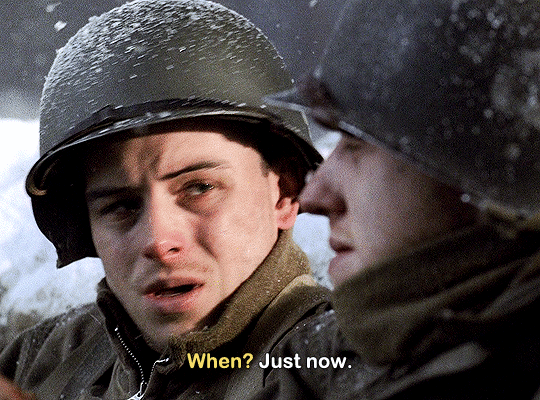
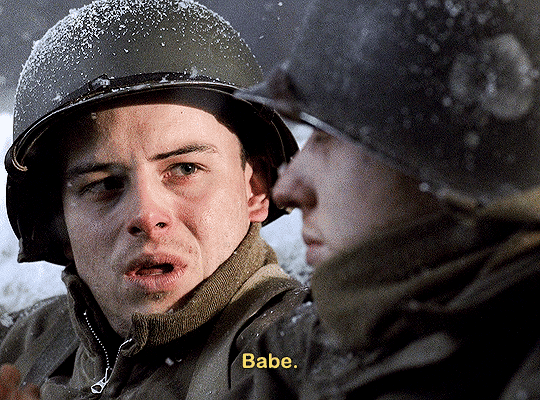
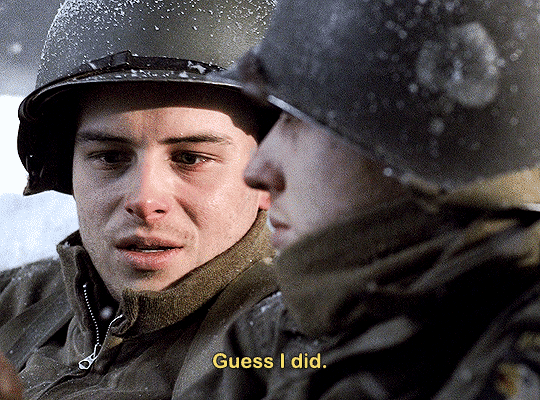

Heffron. Watch the Goddamn line.
BAND OF BROTHERS | Pt. 6: Bastogne
#band of brothers#hbo war#hboedit#hbowaredit#tvedit#dailyflicks#filmtvedit#tvandfilm#bandofbrothersedit#bobedit#bookstofilms#adaptationsdaily#eugene roe#babe heffron
750 notes
·
View notes
Text
In today's update of Canada Loves Eugenics, 10,064 people died in 2021 through medically assisted death in Canada, and while MAID supposedly exists to allow people with severe, incurable illnesses to die with dignity on their own terms, MAID is generally used because disabled and mentally ill people cannot access governmental assistance and are living in poverty.
The Canadian government is actively pushing poor, disabled people to death.
oh and by the way, Canada performs more organ transplants from MAID donors than any other country in the world.
"Six disability rights and religious advocates told Reuters that the pace of the planned changes to the assisted death framework in Canada brings additional risks of people opting for MAID because they are unable to access social services - the lack of which could exacerbate their suffering." - source
Anyway, it's basically like this: the USA has the Americans with Disabilities Act and Canada has MAID
#disability#ableism#canada loves eugenics#canpol#canada#maid#medical assistance in dying#human rights#disability rights#disability community#class war#eugenics
791 notes
·
View notes
Text

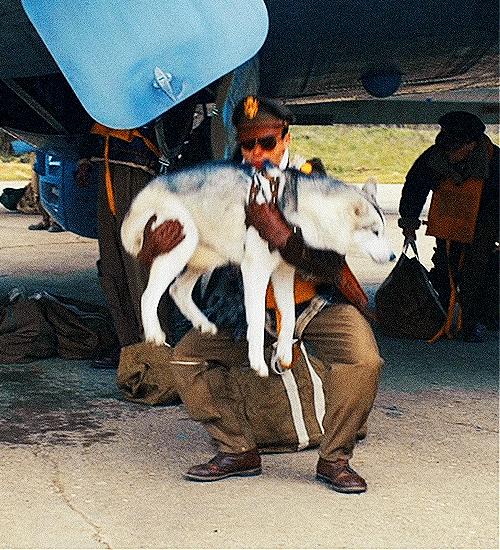




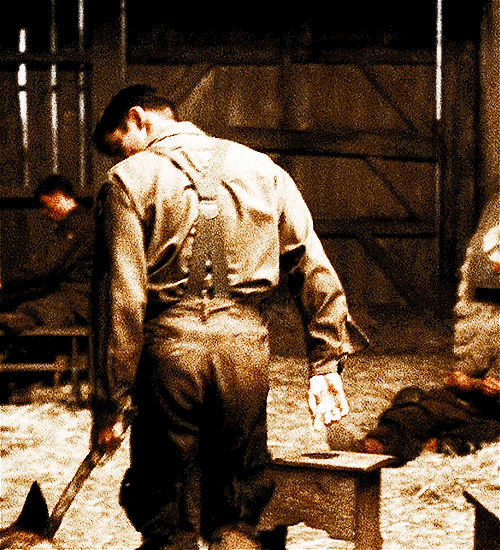

meatball - deacon - hoosier's dog - trigger
hbo war doggie gifset requested by @lamialamia 🐾
#hbo war#the pacific#masters of the air#band of brothers#eugene sledge#bill hoosier smith#gale cleven#hbowardaily#gif#felt like i was cheating on my dog while making this#SORRY THIS IS SO LATE LINH
512 notes
·
View notes
Text
so we're finally getting a Eugenics Wars/Khan series aren't we
First they mentioned the Eugenics Wars and "Project Khan" in Picard season 2
and then! within three episodes of Strange New Worlds being out, we've gotten two episodes that were related to eugenics, Khan, and/or the Eugenics Wars outright
this coming from a franchise that up until now was like "uhh it was in the 90s?? maybe??? shadow war! Maybe it was World War III! Maybe it isn't! Maybe it was in the mid 2050s!"
but they're really doubling down on filling in this time period, and all those Nicholas Meyer written Khan series rumors are really starting to feel like a lil smth smth
#star trek: strange new worlds#snw spoilers#star trek: picard#picard spoilers#strange new worlds spoilers#eugenics wars
0 notes
Text
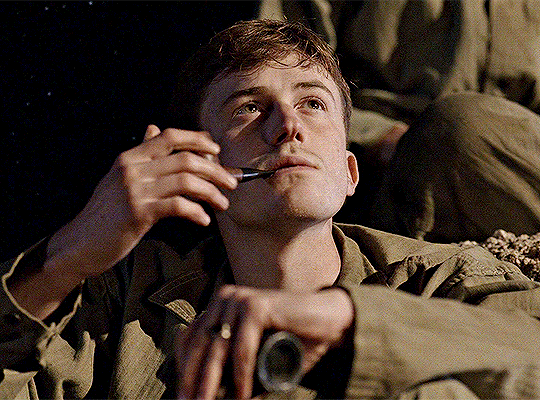
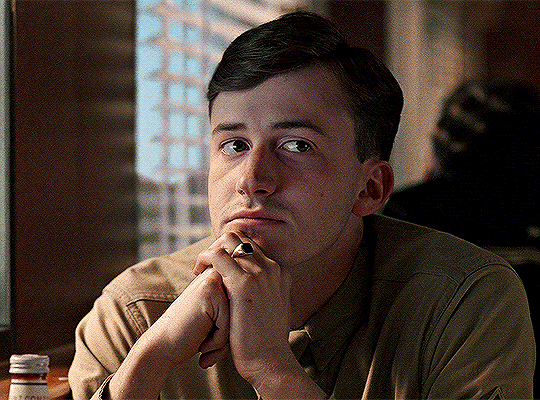
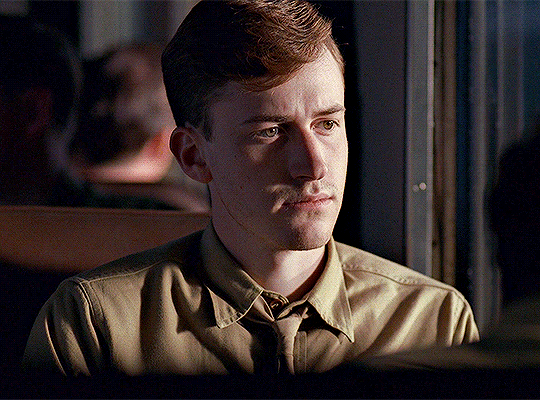

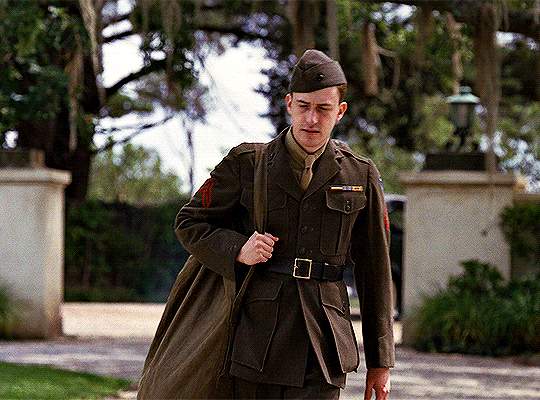



JOE MAZZELLO as EUGENE SLEDGE
the pacific (2010) || part ten: home
#joemazzelloedit#eugene sledge#the pacific#thepacificedit#tvedit#hboedit#hbowaredit#hbo war#useremu#userspacey#userallisyn#tuseraud#usermaguire#userangelic#hbowardaily#ronsparky#mine*
311 notes
·
View notes
Text

Welcome to HBO's WWII Fandom Rewatch!
You are cordially invited to join us in watching Band of Brothers, The Pacific, and Masters of the Air in chronological order April 29 - July 14, 2024.
We will be watching three episodes a week and will have prompts to boost fandom creation as we watch together!
You can find the episode schedule and prompts below the cut. Individual posts can be found here and here if you prefer shorter posts.
If you are unable to watch the show at the same time as the schedule, no worries. While we are personally planning to liveblog together the episodes per the schedule, we understand everyone has lives outside of tumblr. Watch whenever you are able - our goal is to bond over our love for these shows and experience them again together. Pop in when you are able! :)
Please tag all your posts during this event with #hboww2rewatch and give us a follow for all updates on the rewatch.
Please reblog this post to spread the word!
Schedule:
We are tentatively planning to watch Tuesday, Thursday, and Saturdays, but that is not set in stone - watch when you are able during the week!
Week 1: Mon April 29- Sun May 5
The Pacific E1 (Dec ‘41- Oct ‘42)
The Pacific E2 (Oct ‘42)
The Pacific E3 (Dec ‘42- Fall ‘43)
Week 2: Mon May 6- Sun May 12
Masters of the Air E1 (Spring ‘43)
Masters of the Air E2 (Spring ‘43)
Masters of the Air E3 (Aug ‘43)
Week 3: Mon May 13- Sun May 19
Masters of the Air E4 (Oct ‘43)
Masters of the Air E5 (Oct ‘43)
Masters of the Air E6 (Oct ‘43)
Week 4: Mon May 20- Sun May 26
The Pacific E4 (Dec ‘43)
Masters of the Air E7 (march ‘44)
Band of Brothers E1 (June ‘44)
Week 5: Mon May 27- Sun June 2
Masters of the Air E8 (June ‘44)
Band of Brothers E2 (June 6, ‘44)
Band of Brothers E3 (June 7, ‘44)
Week 6: Mon June 3- Sun June 9
The Pacific E5 (Sept ‘44)
Band of Brothers E4 (Sept ‘44)
The Pacific E6 (Sept-Oct ‘44)
Week 7: Mon June 10- Sun June 16
Band of Brothers E5 (Oct ‘44)
The Pacific E7 (Oct-Dec ‘44)
Band of Brothers E6 (Dec ‘44)
Week 8: Mon June 17- Sun June 23
Band of Brothers E7 (Jan ‘45)
Band of Brothers E8 (Feb ‘45)
The Pacific E8 (Feb ‘45)
Week 9: Mon June 24- Sun June 30
Band of Brothers E9 (April ‘45)
The Pacific E9 (April-June ‘45)
Masters of the Air E9 (Feb-June ‘45)
Week 10: Mon July 1- Sun July 7
Band of Brothers E10 (May-Aug ‘45)
The Pacific E10 (Aug ‘45)
Saving Private Ryan (Bonus event)
Week 11: Mon July 8- Sun July 14 - post rewatch events to encourage fellow fans!
Reblog people’s creations
Leave comments on fics
Consider making a new friend in someone else who participated
Prompts:
Week 1: Mon April 29- Sun May 5:
Heading Out
First Fight
Friends
Orange
Week 2: Mon May 6- Sun May 12:
Crash
Crew
Superstition
Blue
Week 3: Mon May 13- Sun May 19:
Dancing
Reunion
Kinship
Red
Week 4: Mon May 20- Sun May 26:
Recuperation
Camp Life
Training
Green
Week 5: Mon May 27- Sun June 2:
Tuskeegees
Parachute
Injured
Purple
Week 6: Mon June 3- Sun June 9
Reunited
Replacement
Airfield
White
Week 7: Mon June 10- Sun June 16:
Typewriter
Loss
Cold
Pink
Week 8: Mon June 17- Sun June 23:
Shelling
Translation
Wedding
Brown
Week 9: Mon June 24- Sun June 30:
Discovery
Humanity
Celebration
Yellow
Week 10: Mon July 1- Sun July 7:
Bonding
Adjustment
Sacrifice
Dress Uniform
Black
Week 11 Mon July 8- Sun July 14:
Favorite Crew
Favorite Company
Best Friendship
Humor
Underrated Character
Character + Quote
Headcanons
Crossover
Something Missing
#hbowar#hbo war#mota#masters of the air#the pacific#pacific#band of brothers#bob#appletv#hbo#hbowardaily#apple tv#appletvsource#buck cleven#gale cleven#buck egan#john egan#harry crosby#rosie rosenthal#John Basilone#Eugene Sledge#Robert Leckie#Snafu Shelton#RV Burgin#Runner Conley#Chuckler Juergens#Sidney Phillips#Hoosier Smith#Richard/Dick Winters#Lewis Nixon
320 notes
·
View notes
Text
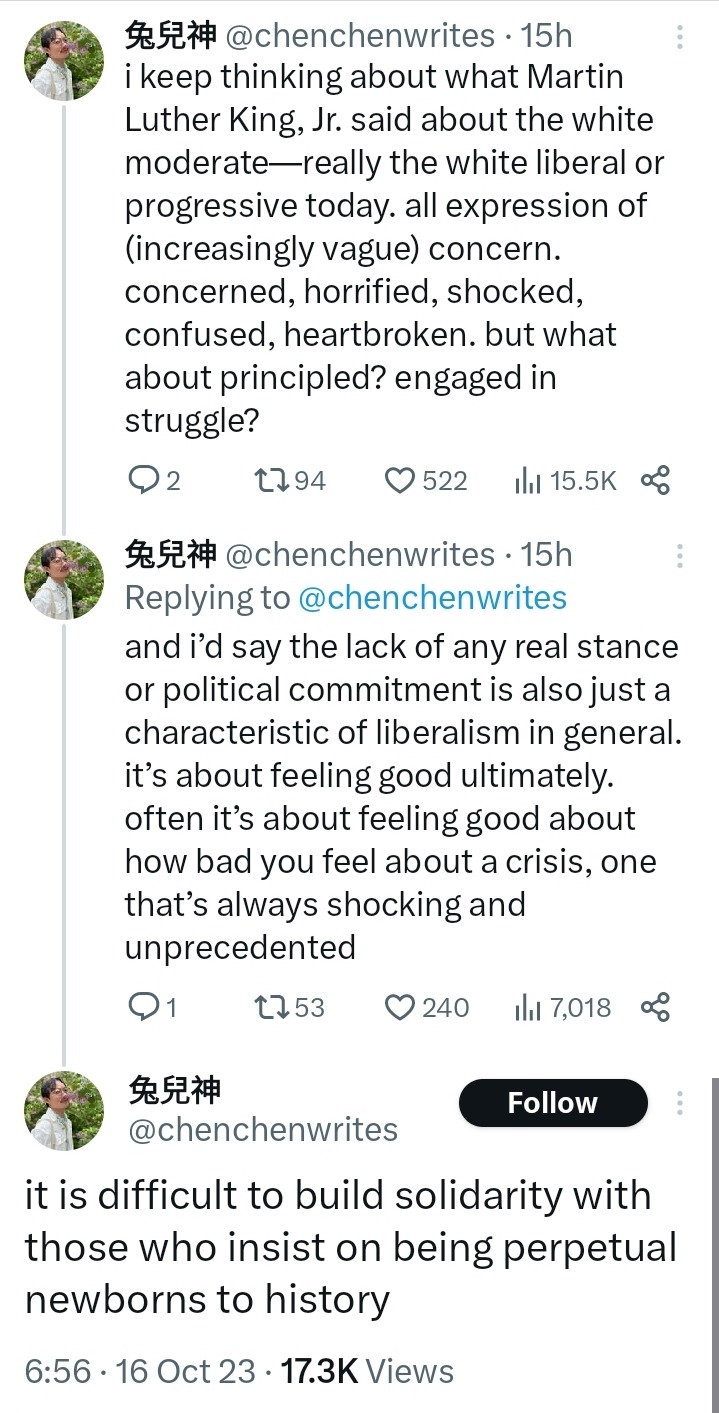
History isn't a disparate collection of stories from long ago. It's the necessary context for the present moment and the forecast for the future. All histories are intertwined, and the narratives of power and privilege, oppression and resistance, adversity and triumph are as constant in their patterns as the laws of physics.
#free palestine#black lives matter#landback#civil rights movement#war on terror#fascism#imperialism#colonization#genocide#colonialism#indigenous sovereignty#climate change#military industrial complex#current events#labour rights#trans genocide#eugenics#this describes literally every political struggle going on right now#and western leftists and liberals are like pikachu face and handwringing every damn time and I AM TIRED#you dont even need to know the entire history of palestine and israel#you just need to understand how colonization and ethnic cleansing and fascism WORKS#you are morally obliged to actively seek education and have a unequivocal stances against violation and annihilation#knee of huss
534 notes
·
View notes
Text

bastogne
868 notes
·
View notes
Text
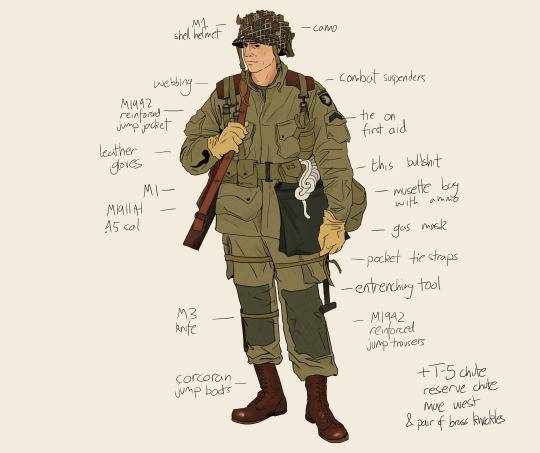


uniform studies + kit lists
#theres literally no cohesion between anyones uniform like. they all have diff bits at any moment. anyway! studies#hbo war#band of brothers#the pacific#masters of the air#joe toye#eugene sledge#rosie rosenthal#ww2#ww2 uniforms#also wanna do service/dress uniforms and the other airmen flying kits becoz theres so much variation in each + its fun researching#this comes from my oc stuff but i like giving their uniforms slight colour variations to tell them apart like rosies is more pink toned#bubbles is more blue/dark grey. sledge is cool tones. snaf is warm etc. the bob guys are all the same shade tho
293 notes
·
View notes